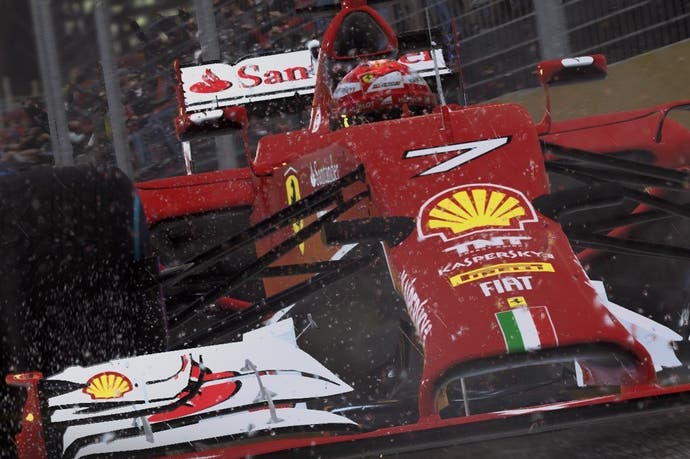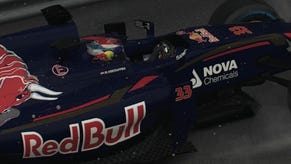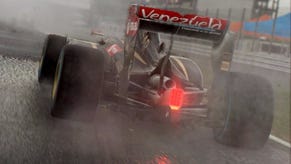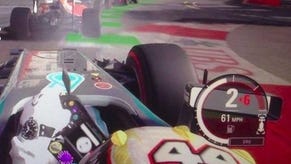Face-Off: F1 2015
Top gear?
The challenge facing Codemasters is immense: with F1 2015's debut on PS4 and Xbox One, the game needs to provide a generational leap over its predecessors - our early impressions of the game revealed substantial improvements in terms of graphics, physics and handling but the game also falls short in some areas: the developers clearly faced hard choices in terms of balancing new features while hitting a consistent level of performance. As we've previously discussed, frame-rates are an obvious sticking point on console, with tearing and judder demonstrating that the studio couldn't quite hit its 60fps target, though the impact on actual playability isn't particularly severe in most cases.
But if there's a sense that the console versions aren't quite as smooth and as fluid as they should have been, the introduction of the PC version adds an interesting variable to the mix. Not only is the horsepower available to hit a solid 60fps, but the potential is there to deliver more substantial graphical enhancements too. Basic resolution naturally comes down to user selection, but as always we choose 1080p to match the current-gen console standard, ramping up all settings to the max. The end result is additional refinement over console as opposed to any revelatory difference.
There are more similarities than differences - for example, anti-aliasing duties are carried out via the popular SMAA post-process technique, though Codemasters has added an additional TAA temporal component, where information from previously rendered frames is used to smooth off the current render. Native 1080p resolution is present on the PS4, while the Xbox One game presents at 1440x1080, with a light horizontal upscale in play. Anti-aliasing appears to share a similar SMAA profile to the PC release, including the additional temporal component.
However, in terms of overall clarity, image quality on F1 2015 falls short. Codemasters' excessive use of multiple post-processing effects dramatically softens the visuals, and as a result this diminishes the crisp level of sharpness one might hope for at 1080p. The intense post-processing effects do benefit the Xbox One release to a degree though, with the lack of raw sharpness helping to prevent the manifestation of upscaling artefacts - a situation aided by the fact that the game only has to scale pixels horizontally.
Alternative comparison:
We're not entirely sure why Codemasters decided to adopt this softer aesthetic - it may well be down to the pursuit of a more realistic, less CG-like presentation. The motion blur certainly adds an extra level of intensity to the races, but the use of in-game depth of field and chromatic aberration comes across as excessive to our eyes and somewhat at odds with the clarity in motion you get from 60fps gameplay. On console, it's not possible to adjust the levels of post-processing, but on PC some of these effects can be manually disabled via editing the hardware_settings_config.xml file. Changing 'motionblur' and 'depthOfField' from 'true' to 'false' gives us an increase in clarity at high speeds, though does little to enhance the core sharpness of the presentation in static scenes.
In other areas, F1 2015 is hindered by a more modest use of lighting and shader effects compared to other-cutting edge 60fps racing titles on the current generation of consoles. The lighting model is a little flat, while the surface materials feature a distinctly last-gen appearance. On the plus side, the level of geometry and environment detail is impressive, but when compared to the likes of Project Cars, the range of effects work and the quality of the overall presentation feels a little limited. Indeed, given that F1 2015 struggles to hit 60fps without tearing or dropping frames on both consoles, the possibility is there that Codemasters may have chosen to pull back on certain visual elements of the game in order to get close to its target frame-rate.
That said, the game's visual presentation takes on a whole new dimension during stormy conditions, where the combination of environmental reflections, increased use of specular, and a more ambient approach to lighting deliver more flair to some of the tracks in the game. The dynamic lighting transitions in exotic circuits - such as Abu Dhabi - also stand out from the more muted look of tracks like Melbourne or Shanghai. The experience doesn't come close to matching the beauty of Project Cars or the pre-baked weather conditions seen in the upcoming Forza Motorsport 6, but it definitely shifts up the presentation a notch.
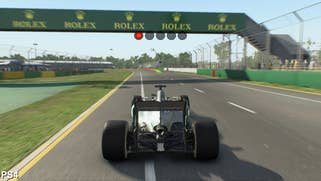

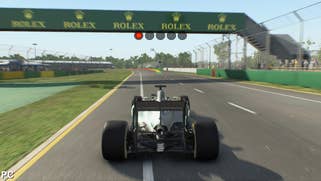
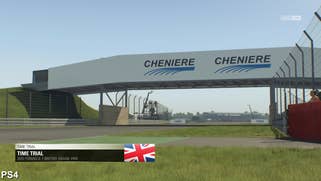

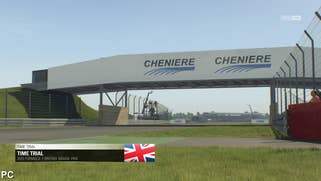
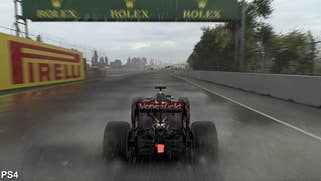
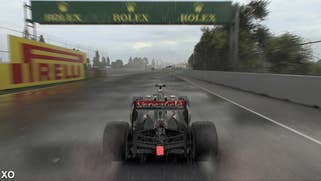
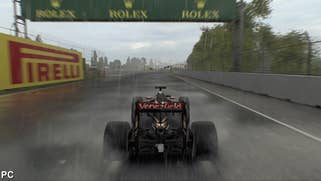
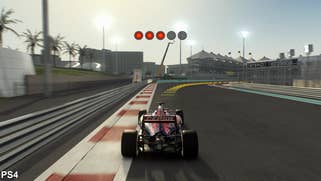
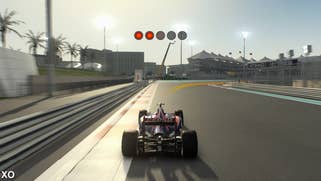





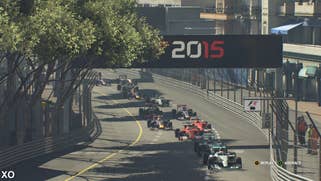

A deeper graphical comparison across all platforms throws up a few inconsistencies, such as some rather strange geometry errors on the Xbox One, where we find random buildings and other structures positioned higher up than they are on PS4 and PC. Another notable glitch is the bizarre lighting situation on PS4 and PC, which sees the odd light source inexplicably culled on certain tracks along with the accompanying specular sheen on the ground. There also inconsistencies with the ambient occlusion implementation on Xbox One, where coverage is present more strongly in some locations than others, though this anomaly isn't as obvious during gameplay. It's minor stuff generally, only flagged up during direct comparisons, but we hope to see these issues sorted via an update soon.
Aside from these oddities, the core assets are comparable between platforms, with the PC version mainly offering up tangible, noticeable gains in resolution, and the level of texture filtering on offer. Running with the ultra preset enabled, the PC version of F1 2015 shares the same core geometry and texture work as the PS4 and Xbox One releases. However, differences in filtering and rendering resolution have an impact on texture detail across all platforms. The sub-1080p framebuffer on the Xbox One causes a slight reduction in detail - particularly on distant scenery - along with a blurring of trees and other 2D elements.
Using 16x anisotropic filtering, the PC version takes a lead over the console releases in terms of texture filtering quality, displaying crisper textures over longer distances. However, the levels of AF are variable across different surfaces on PC, so in practice we never see the kind of pure clarity we expect. By comparison, consoles appear to be limited to between 4-8x AF depending on the surface, and use of trilinear filtering on the road leads to more pronounced texture blurring. Thankfully, this is not much of an issue when you're driving at speed.
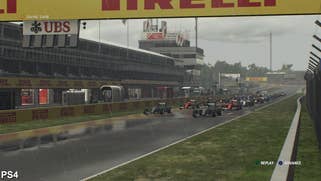
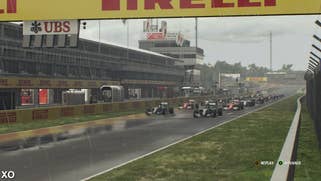
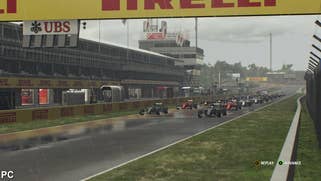

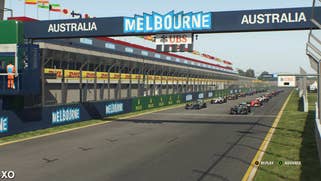
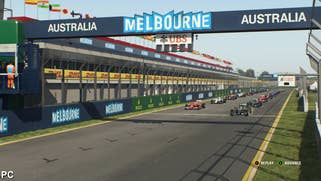

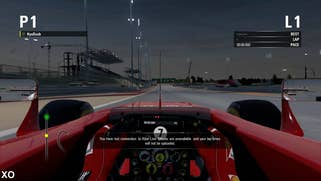
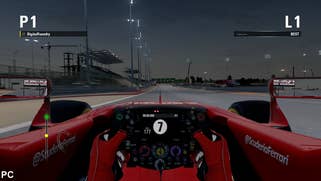



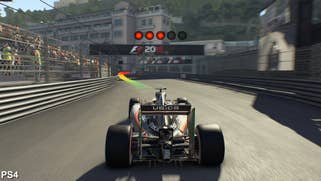
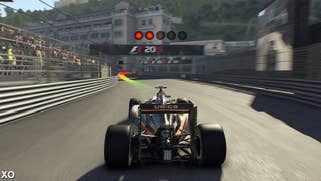

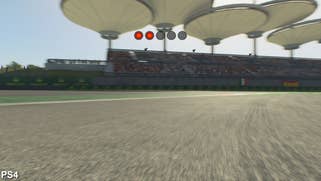


Shadow quality on PC is given a boost too with these effects rendering at a higher resolution while also resolving more detail. There's also the use of higher precision noise map on the surface reflection on the road in wet weather conditions too. Shadows on console appear slightly softer and more indistinct, while the Xbox One version features slightly reduced shadow draw distance caused by what looks like fewer cascades.
In terms of console performance we see both platforms aiming to hit 60fps, but neither manage to achieve it consistently. The result is that dropped frames and screen tearing are part of the package, though thankfully gameplay isn't affected to the degree one might expect with the variable metrics we see on both platforms (the more consistent frame-times are worth looking at in the video to give some idea of response). The PS4 gains a clear advantage here, sticking more closely to the 60fps target while featuring less intrusive tearing: between 50-60fps across a general run of play with frame-rates hitting the 60fps mark when the engine isn't under heavy load. Lateral movement when tacking twists and turns brings some momentary judder to the forefront, as does using any of the chase cam viewpoints - but elsewhere the torn frames and drops in overall fluidity are less noticeable, leading to moments where the 60fps experience comes to the fore.
This is something that doesn't quite hold true for Xbox One. While we might not be hitting 60fps, tackling long straights with less detail can feel perceptually similar and the tearing isn't too intrusive in this situation. However, the dropped frames and visible judder can't be ignored when tackling the corners. With frame-rates often falling between 45-50fps backed by near constant tearing, it's hard for the engine to deliver fluid visuals for prolonged periods. That said, gameplay feels responsive despite the frequently performance issues (again, look to the frame-times to get an idea of how even the update is). In this case the decision to allow frames to be output as quickly as possible - even if this occurs midway through the display refresh, producing the tearing - keeps controller response in the same ballpark as a 60fps title.
Naturally, performance on the PC version is dependent on the individual hardware set-up, but the key to delivering a smooth experience comes down to the engine's ability to scale across both high and low end configurations. Towards the high-end bracket, Nvidia's GTX 780 in combination with an i5 3570 nets you a mostly constant 60fps largely free from stutter using the ultra preset at 1080p with v-sync engaged. In this case a single brief pause at one point at the start of the race resulted in short-lived 54fps measurement, but aside from that performance remains solid for the rest of the race - you are essentially getting a flawless experience where it counts.
Satisfied with performance there, we deployed F1 2015 on some less capable hardware. Based on our tests, a Core i5 processor paired with mid-range 'sweet spot' cards like the R9 280, GTX 960 and R9 380 should get you to 1080p60 with everything maxed, with just the occasional drop down to the mid-50s - a feat we were able to replicate with a Core i3 CPU installed too. For absolute stability, we'd recommend dropping down to the high preset, re-engaging ultra level settings individually to see where you lose the most performance. As always, shadow quality is a good place to start.
Dropping down to our budget i3/GTX 750 Ti combo, ultra high settings are off the table, with high-20s to mid-30s frame-rates. We had to drop all settings to the high preset, with shadows at medium to bring us into the 45-55fps territory we'd associate with the console experience - and that also required a +200MHz core, +400MHz RAM overclock. Even then, shadow and ground cover quality isn't as good as the PS4 version. The scalability is there to get decent gameplay from less capable kit but we'd recommend the R9 280/R9 380/GTX 960 tier of GPUs to get a really good, console-beating experience.
F1 2015: the Digital Foundry verdict
Next-gen franchise debuts are always tricky and F1 2015 does little to buck the trend. There are plenty of enhancements to enjoy, but it's difficult to avoid the sense that the developer is still getting to grips with the new wave of console hardware. Comparisons with Project Cars are inevitable: while the performance levels of PS4 and Xbox One are uncannily similar to Slightly Mad's efforts, the game struggles to deliver a similar level of overall finesse. Overall, it seems that the challenge of targeting 60fps has had a clear knock-on effect to the overall presentation: some elements - such as the level of geometry detail - appear suitable complex and comparable with the competition, but the range of effects work and lighting can look a little 'last-gen' by comparison outside of the rainy races.
Neither console delivers the near faultless 60fps experience we were hoping for, but out of the two it's the PS4 version that provides smoother gameplay with fewer intrusive visual inconsistencies, making it the best version to buy given the choice. However, despite the more noticeable screen-tear and judder, the Xbox One game remains highly playable, owing to responsive controls produced by consistent frame delivery. In this regard, Codemasters' decision to employ adaptive v-sync is the right one: while the hit in terms of image consistency isn't ideal, the core gameplay remains sound.
From a graphical and performance perspective the PC version easily comes out on top. The gameplay experience looks and feels more polished when combined with stable frame-rates and image consistency free from any tearing, while the ability to dial back post-process effects is a nice bonus too. However, despite the technical benefits on offer, there are an alarming amount of reports of a number of serious issues that impact the PC version. A look at the complaints on the Steam forums discuss many game-breaking bugs and glitches. Common issues include regular crashing after choosing a gameplay mode and during a race, along with a bug that permanently leaves on all driving assists and OSD in Pro Championship Mode.
Based on the hours we've put into the PC game, we actually found it to be fairly solid - aside from a solitary situation where joypad controls automatically veered us to the left, with accelerator and brake pedals reversed after leaving the pits. But clearly what was fine for us may well turn out to be an entirely different scenario for you based on the reports we've seen so far, so it may well be prudent to hold fire on a PC purchase until the bugs are quashed. The fact that so many people are having trouble is a major concern - and that's a shame, because there's real promise in this game and the PC version is the only way to power past the compromises found in the console releases.
